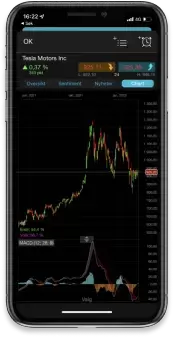European markets enjoyed their second successive day of gains yesterday, boosted by the announcement by China to end its ban on overseas travel groups to other countries has also helped boost travel, leisure, and the luxury sector.
The gains were also helped by a lower-than-expected rise in US CPI of 3.2%, with core prices slipping back to 4.7%, which increased expectations that we could well have seen the last of the Fed rate hiking cycle, which in turn helped to push the S&P500 to its highest levels this week and on course to post its biggest daily gain since July.
Unfortunately, San Francisco Fed President Mary Daly had other ideas, commenting that the central bank has more work to do when it comes to further rate hikes, which pulled US yields off their lows of the day, pulling stock markets back to break even.
This failure to hang onto the gains of the day speaks to how nervous investors are when it comes to the outlook for inflation at a time, even though Daly isn’t a voting member on the FOMC this year, and she’s hardly likely to say anything else.
Certainty hasn’t been helped this week by data out of China which shows the economy there is in deflation, despite recent upward pressure on energy prices.
It also means that we can expect to see a lower open for markets in Europe with the main focus today being on the latest UK Q2 GDP numbers, as well as US PPI for July.
Having eked out 0.1% growth in Q1 of this year, today’s UK Q2 GDP numbers ought to show an improvement on the previous two quarters for the UK economy, yet for some reason most forecasts are for zero growth. That seems unduly pessimistic to me, although the public sector strike action is likely to have been a drag on economic activity.
Contrary to a lot of expectations economic activity has managed to hold up reasonably well, despite soaring inflation which has weighed on demand, and especially on the more discretionary areas of the UK economy.
PMIs have held up well throughout the quarter even as they have weakened into the summer.
Retail sales have been positive every month during Q2, rising by 0.5%, 0.1% and 0.7% respectively. Consumer spending has also been helped by lower fuel pump prices, and with unemployment levels still at relatively low levels and wage growth currently above 7%, today’s Q2 GDP numbers could be as good as it gets for a while.
Despite the resilience shown by the consumer, expectations for today’s Q2 are for a 0% growth which seems rather stingy when we saw 0.1% in Q1. This comes across as surprising given that Q2 has felt better from an economic point of view than the start of the year, with lower petrol prices helping to put more money in people’s pockets despite higher bills in April. This raises the prospect of an upside surprise, however that might come with subsequent revisions.
Nonetheless, even as we look back at Q2, the outlook for Q3 is likely to become more challenging even with the benefit of a lower energy price cap, helping to offset interest rates now at their highest levels for over 15 years. With more and more fixed rate mortgages set to get refinanced in the coming months, the second half of the year for the UK economy could well be a lot more challenging than the first half.
Yesterday US CPI came in slightly softer than expected even as July CPI edged up to 3.2% from 3% in June. Today’s PPI numbers might show a similar story due to higher energy prices, but even here we’ve seen sharp falls in the last 12 months.
A year ago, US PPI was at 11.3%, falling to 0.1% in June, with the move lower being very much one way. We could see a modest rebound to 0.7% in July. Core prices have been stickier, but they are still expected to soften further to 2.3% from 2.4%. 12 months ago, core PPI was at 8.2% and peaked in March last year at 9.6%.
EUR/USD – squeezed above the 1.1050 area yesterday, before failing again, and sliding back below the 1.1000 area. Despite the failure to break higher we are still finding support just above the 50-day SMA. Below 1.0900 targets the 1.0830 area.
GBP/USD – popped above the 1.2800 area yesterday and then slipped back. We need to see a sustained move back above the 1.2800 area to ensure this rally has legs. We have support at the 1.2620 area. Below 1.2600 targets 1.2400. Resistance at the 1.2830 area as well as 1.3000.
EUR/GBP – pushed up to the 100-day SMA with resistance now at the 0.8670/80 area. Support comes in at the 0.8580 area with a break below targeting the 0.8530 area. Above the 100-day SMA targets the 0.8720 area.
USD/JPY – closing in on the June highs at the 145.00 area. This is the key barrier for a move back towards 147.50, on a break above the 145.20 level. Support now comes in at the 143.80 area.
Disclaimer: CMC Markets is an execution-only service provider. The material (whether or not it states any opinions) is for general information purposes only, and does not take into account your personal circumstances or objectives. Nothing in this material is (or should be considered to be) financial, investment or other advice on which reliance should be placed. No opinion given in the material constitutes a recommendation by CMC Markets or the author that any particular investment, security, transaction or investment strategy is suitable for any specific person. The material has not been prepared in accordance with legal requirements designed to promote the independence of investment research. Although we are not specifically prevented from dealing before providing this material, we do not seek to take advantage of the material prior to its dissemination.







